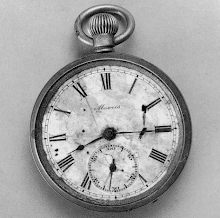skip to main |
skip to sidebar
.jpg) Janet Bohlen points to where munition was found
Janet Bohlen points to where munition was found
Produced by Georgetown University students, BURIED IN HISTORY is a gripping 11-minute documentary that uncovers a hidden story in Spring Valley, one of Washington, D.C.’s most affluent neighborhoods and site of a chemical research
facility during World War I. It will compete with seven other short student documentaries at the Environmental Film Festival. The
program will be introduced by Chris Palmer and Sandy Cannon-Brown,
Professors, American University. A panel discussion follows.
pg17.jpg) Bottle necks recovered on Glenbrook before February snow storm
Bottle necks recovered on Glenbrook before February snow storm
Christopher Cottrell
The Eagle (February 25, 2010: pg 4)
pg16.jpg) AUES debris recovered on Glenbrook before February snow storm
AUES debris recovered on Glenbrook before February snow storm
The Environmental Protection Agency has set the [interim advisory] safety standard for perchlorate levels in drinking water at 15 parts per billion ... Fourteen samples from four wells in the AU and Spring Valley area exceed the EPA perchlorate advisory level, including one sample from a well near the Kreeger Building with perchlorate levels of 146 ppb as of June 2007 — almost 10 times the EPA standard, according to the Corps. But when the Corps took a reading at that well last November, that number was down to 50.
Christopher Cottrell
The Eagle
February 22, 2010
"The Army’s most recent perchlorate sampling with lower numbers come from tests conducted in November under far different conditions then all previous sampling which had been done in the spring and summer. In their conclusions, the Army neglects to consider soil density and rainwater differences in seasons, and uses, for comparison to the November data, summer sampling more than two years old."
Jeffrey Hanley, Class of 2009
The Eagle
February 22, 2010 (pg. 3)
"I participated with hydrologists from EPA, the Corps, USGS, DC and URS — the company that does the groundwater testing — and there was more than a little discussion about where that perchlorate is coming from. We've been trying to work on speculating and gathering information that we've gotten in order to go beyond speculation. It's a sore spot for us trying to figure it out. And also, as Todd pointed out, we've had this discussion of the number of cases in which we've worked on groundwater sites where you never definitively identify where the contamination is coming from. It's an ongoing problem."
Peter deFur, Ph.D., Technical Consultant
Spring Valley RAB
February 16, 2010
 Free Hit Counter
Free Hit Counter
.jpg) Janet Bohlen points to where munition was found
Janet Bohlen points to where munition was found
pg17.jpg)
pg16.jpg)




